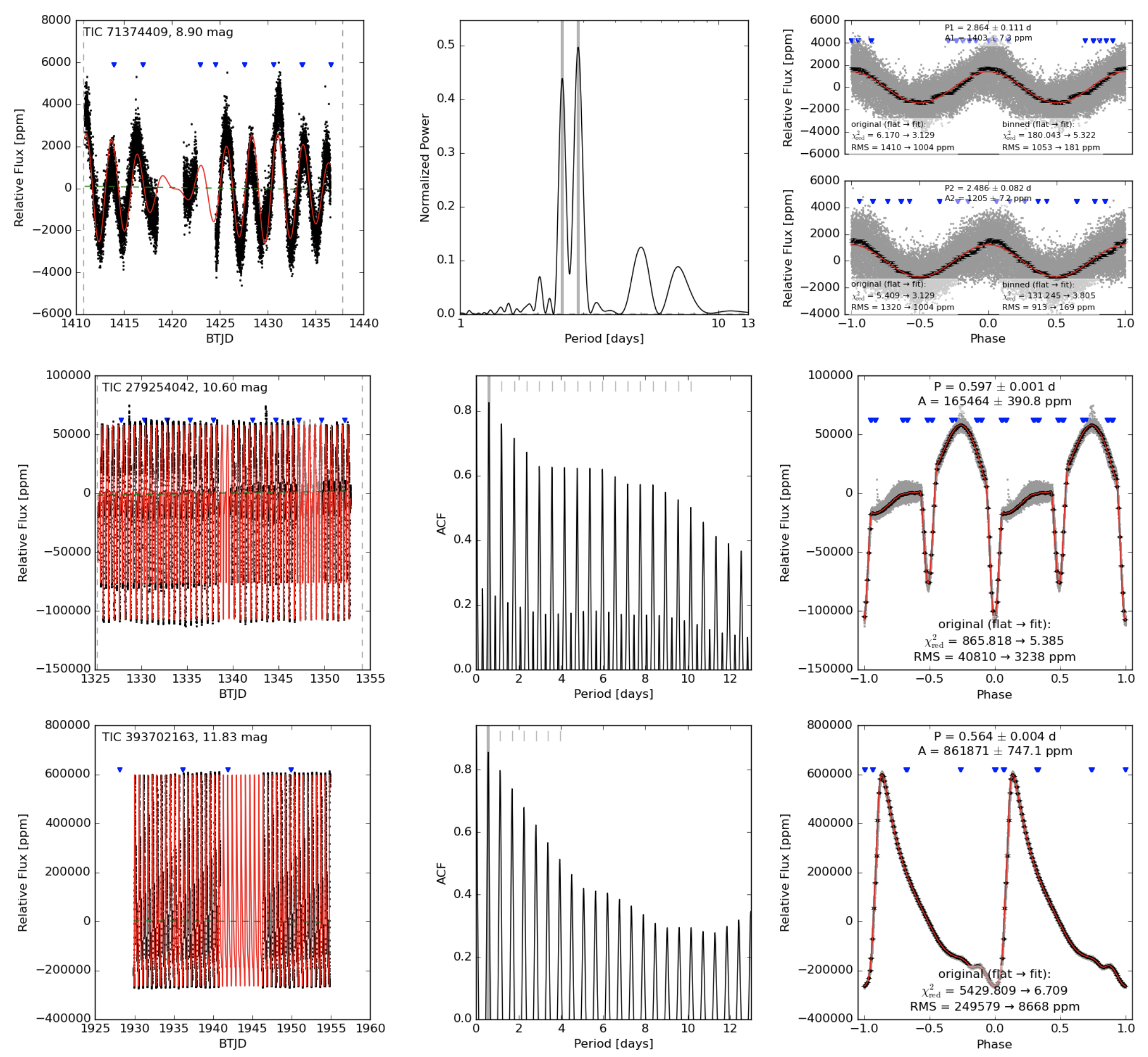Mission Overview
The TESS Stellar Variability Catalog (TESS-SVC)
Primary Investigator: Tara Fetherolf
HLSP Authors: Tara Fetherolf, Joshua Pepper, Emilie Simpson, Stephen R. Kane, Teo Mocnik, John Edward English, Victoria Antoci, Daniel Huber, Jon M. Jenkins, Keivan Stassun, Joseph D. Twicken, Roland Vanderspek, Joshua N. Winn
Released: 2023-08-15
Updated: 2023-08-15
Primary Reference(s): Fetherolf et al. 2023
DOI: 10.17909/f8pz-vj63
Citations: See ADS statistics
Slideshow
Overview
The TESS Stellar Variability Catalog (TESS-SVC) describes which stars, among those observed at 2-min cadence in the TESS light curve photometry, show periodic variability over the timescales of 0.01 to 13 days. The TESS-SVC includes a broad range of periodic variable stars (rotation, pulsation, eclipsing binaries, etc.) that were selected based on the photometric periodogram analysis described in Fetherolf et al. 2023. Each star in the TESS-SVC includes the measured period of photometric variability, time and amplitude of the maximum flux, significance of the detected variability signal, properties extracted from the TESS Input Catalog, and a summary figure. Each summary figure shows the full TESS light curve (left panels), Lomb-Scargle periodogram or auto-correlation function (center panels), and the light curve phase-folded on the measured photometric variability period (right panels). The periodogram results provided are extracted from a single sector of TESS PDCSAP photometry, and the method for selecting the specific sector for stars observed in multiple TESS sectors is described in Fetherolf et al. 2023. You can also use an online visualization tool to interact directly with this dataset.
Data Products
The current version of the TESS-SVC (v1.0) includes 84,046 stars that are considered significantly variable on timescales of 0.01-13 days; these stars were observed at a 2-min cadence during the TESS Prime Mission (Sectors 1-26). There are 68,497 stars with photometric variability that is best described by a single-sinusoidal function (1sin), 10,887 stars with photometric variability that is best described by a double-sinusoidal function (2sin), and 4662 stars with photometric variability that is best described by an auto-correlation function (acf). The catalog will continue to be updated as new sectors become available, and will later include stars that exhibit photometric variability on timescales longer than 13 days.
The catalog file names will change in future data releases following this pattern:
hlsp_tess-svc_tess_lcf_<solution>-<sectors>_tess_<ver>_cat.csv
where:
- <solution> = a designation of the method that best described the photometric variability, which can be a single-sinusoidal function (1sin), double-sinusoidal function (2sin), or auto-correlation function (acf). The combined variability catalog is represented by "all" and contains an additional "Solution" column.
- <sectors> = the dash-separated range of sectors covered by the catalog. In v1.0, this field is s0001-s0026, meaning TESS Sectors 1 through 26.
- <ver> = MAST version number of the catalog, e.g. "v1.0".
The summary figures show the results from the variability analysis and their naming follows this pattern:
hlsp_tess-svc_tess_lcf_tic<tess_id>_tess_<ver>_img.png
where:
- <tess_id> = TESS Input Catalog object identifier
- <ver> = MAST version number of the catalog, e.g. "v1.0".
Data file types:
| <solution>...cat.csv | Catalog files containing the photometric variability solutions detailed by <solution> (all, 1sin, 2sin, or acf), as detailed above. |
| img.zip | Zip file containing all 84,046 summary figures in the form of hlsp_tess-svc_tess_lcf_tic<tess_id>_tess_<ver>_img.png |
Data Access
| Catalog Files | Size |
|---|---|
| 93 MB | |
| 75 MB | |
| 14 MB | |
| 5 MB |
| Figure Files Bulk Download | Compressed Size |
|---|---|
| 15 GB |


